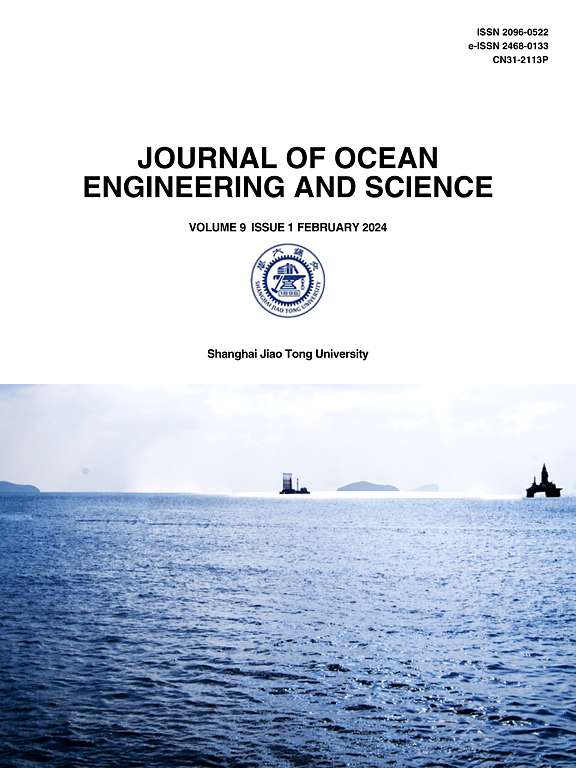Proportional-integral-derivative controller optimization by particle swarm optimization and back propagation neural network for a parallel stabilized platform in marine operations
IF 11.8
1区 工程技术
Q1 ENGINEERING, MARINE
引用次数: 0
Abstract
The parallel stabilized platform is an important equipment to ensure the stability of marine operations, which can effectively mitigate collisions of lifted goods. The 3UPU_UP parallel stabilized platform system is proposed, and the kinematics and dynamics of the 3UPU_UP parallel stabilized platform are researched, where U denotes universal joint; P denotes prismatic joint. The platform motion can be realized by controlling the actuators to realize compensation ship motion. While conventional control algorithms are difficult to cope with complex nonlinear systems, the optimization control method has been proposed. Based on the back propagation (BP) neural network proportional-integral-derivative (PID) controller, the particle swarm optimization (PSO) is combined with the BP neural network, and the combined PSO-BP PID controller optimization algorithm is introduced into the servo control system. Compared with classic PID and BP PID, the overshoot of PSO-BP PID to the response of step signal is reduced by 10.2% and 11.48%, respectively, and 0.36s and 0.17s reduce the time required to reach stable states. By comparing the reduction of the error under various sea conditions, the upper platform tracking error curve is flatter under a PID controller based on PSO-BP, the tracking motion is closer to the theoretical value and the control accuracy is improved. The maximum tracking error of the upper platform is smaller, the overall motion vibration of the platform is reduced, and the anti-interference ability is enhanced. The PSO-BP PID controller for wave compensated platform servo system control is more reasonable, more adaptable to the complex and changing environment.
基于粒子群和反向传播神经网络的比例积分微分控制器优化
并联稳定平台是保证海上作业稳定性的重要设备,它能有效地缓解起升货物的碰撞。提出了3UPU_UP并联稳定平台系统,研究了3UPU_UP并联稳定平台的运动学和动力学特性,其中U为万向节;P表示移动关节。通过控制作动器实现平台运动,实现舰船补偿运动。针对传统控制算法难以处理复杂非线性系统的特点,提出了优化控制方法。在反向传播(BP)神经网络比例积分导数(PID)控制器的基础上,将粒子群优化(PSO)算法与BP神经网络相结合,将组合PSO-BP PID控制器优化算法引入到伺服控制系统中。与经典PID和BP PID相比,PSO-BP PID对阶跃信号响应的超调量分别减小了10.2%和11.48%,达到稳定状态所需的时间分别缩短了0.36s和0.17s。通过对比不同海况下误差的减小情况,基于PSO-BP的PID控制器使上平台跟踪误差曲线更平坦,跟踪运动更接近理论值,提高了控制精度。上层平台的最大跟踪误差较小,降低了平台的整体运动振动,增强了抗干扰能力。采用PSO-BP PID控制器对波动补偿平台伺服系统进行控制更合理,更能适应复杂多变的环境。
本文章由计算机程序翻译,如有差异,请以英文原文为准。
求助全文
约1分钟内获得全文
求助全文
来源期刊

Journal of Ocean Engineering and Science
Multiple-
CiteScore
11.50
自引率
19.70%
发文量
224
审稿时长
29 days
期刊介绍:
The Journal of Ocean Engineering and Science (JOES) serves as a platform for disseminating original research and advancements in the realm of ocean engineering and science.
JOES encourages the submission of papers covering various aspects of ocean engineering and science.
 求助内容:
求助内容: 应助结果提醒方式:
应助结果提醒方式:


